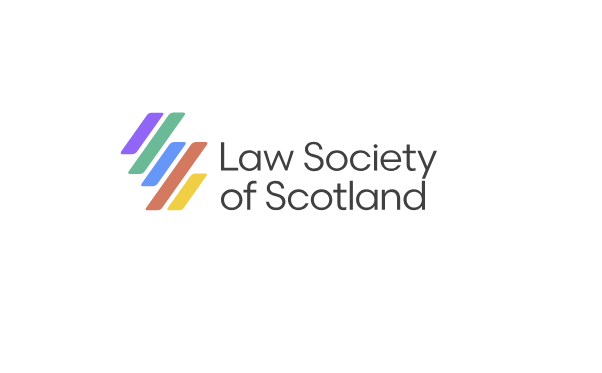Tech
60 seconds with… Aleks Tomczyk | Law Society of Scotland

In this month’s interview, the Society sat down with Alex to find out more about why he has “always been energised by the ability of technology to solve real-world problems and make things better for people.”
Aleks Tomczyk, member of the Law Society’s LawscotTech Advisory Board and Co-Founder and Managing Director of Exizent, discusses Co-Chairing the Legal Tech Conference, the Board’s new strategy and the importance of technology when it comes to the legal sector.
Aleks, could you tell us a bit about your career so far?
If there is a thread running through my career it would be technology innovation and building businesses. I originally started my working life as an engineer; engineering is essentially all about solving problems with technology and that’s kind of what I’ve always done since – just in a variety of different spaces. Early on I ran what was the UK’s first ever corporate venturing scheme for a big international science and technology company and worked in the oil and gas industry in Aberdeen with environmental remediation technology.
This is now the third time I’ve lived in Edinburgh; I came to join a .com startup (imagine eBay for agriculture), which was Scotland’s largest privately funded startup. I then ran and grew a technology, change and software business for a number of years. That was in financial services, and a business which I exited successfully in 2017. After a couple of years doing portfolio consulting, Nick (Cousins) and I started Exizent, which is a ‘bereavement technology’ software business with one foot in the LegalTech space and one foot in the FinTech space. We created Exizent after seeing family members and friends deal with the loss of a loved one and have to deal with all the associated administration at a time of grief. We thought, well, is there something we could do to make the process easier with technology?
You recently said that you have “always been energised by the ability of technology to solve real-world problems and make things better for people”.
Was this one of your motivations for joining the LawscotTech Advisory Board, and for those maybe not so familiar with technology and its parallels to real-life problems and the profession, could you expand on its growing importance?
That was definitely one of the reasons that I joined the Advisory Board and the fact I firmly believe in the application of law and in justice, which comes down to my deep-seated roots in values and principles. I also believe that through the legal system, in all its wide variety of incarnations, whether in-house, criminal, private client or commercial etc, there are huge opportunities for technology to add value to people. So there’s that piece on enabling justice and what is right, but I also believe that the law has a great role to play in enabling prosperity for people. It’s also about services to individuals, about business certainty, efficiency and productivity – these generate revenue, wealth and taxes, which can be used to help all people. Technology is just an extension of that. Technology is a tool to enable the legal system to work better, to be faster, to be more efficient, and to add more value to society. There’s greater potential now for technology to help the legal system and legal professionals than there has ever been before.
In terms of other motivations, I don’t want to overgeneralise, but it is fair to say that different professions have progressed at different paces and there is a perception that the legal profession overall is perhaps further behind the technology adoption curve than others – perhaps as it has not seen as many benefits in the past. Given that my current business exists in the legal technology space, it made sense to bring my knowledge and experience to help. So I’m not on the LawscotTech Advisory Board because of Exizent, I am on the Board because I want to help.
Co-chairing the annual Legal Tech Conference must be a highlight of your time with the Board so far – what else has stood out to you?
I think there’s two things.
The first was the new LawscotTech four-year strategy that was part of the first six months or so. The day where we got together and talked about this was a real highlight for me. It helped remove some of my preconceptions of what everyone was doing and where they’re coming from. It also made me realise that actually we’ve got a great opportunity here from which everyone can benefit.
The second highlight was something I didn’t do officially as part of the Board, but because of being on the Board, when Hermione Hague invited me and some other tech businesses along to Edinburgh Law School to present to the Tech Law and Innovation Elective course. The students were all sitting there with laptops in front of them, not a notebook or a pen in sight. They were eagerly listening, taking digital notes. That’s the way the next generation of legal professions are going to work. I was sitting there with my own notebook because I’m half digital, half paper, but they weren’t. That’s the starting point for the new people coming into the legal sector. They are going to be the drivers of the next iteration of the legal profession.
The conference covered a range of topics from artificial intelligence to the impact of technology on the role of the junior lawyer. If you had to pick one legal tech topic that the profession should be addressing, what would it be and why?
If you really push me to just choose one, I would say that the profession should be addressing doing technology selection and adoption well. Without that, all the rest of the stuff at the conference and arguably what we talk about at LawscotTech is just hot air. Good technology adoption is not just something the profession has to do though; it is incumbent on technology suppliers like us to make it easy and to share good practices to enable it.
I used to say that no matter how good the software is and how technically good the implementation programme is, if you don’t get the users using the software, you have just failed, and you’ve wasted a whole bunch of time and money. So if we can get the technology adoption piece right, then I think that is the single most important thing that the profession could do, as success will encourage more adoption.
Not only have you co-chaired the conference but the Board has also published its strategy for 2024-28, could you sum up the key aims you look to work towards?
So for me, the two pillars that I’m most interested in are, first of all, improving the impact of legal tech because it speaks to everything else you’ve asked me about. That workstream is about understanding the barriers to technology adoption, communicating and sharing examples of the benefits, sharing what works, trying to encourage technology adoption and make it easier for members of the profession. That crucially has to be inclusive across the whole of the profession; we shouldn’t be forgetting about the smaller practices that perhaps don’t have the same resources as larger firms. It’s also important because if you look outside Scotland, even the largest native firms are medium sized in the rest of the world’s context. Some of the very large law firms globally are investing millions and millions in technology. So, if the profession in Scotland or the legal system in Scotland is going to keep up, never mind out-compete, we have to be smarter and help each other.
Another one of our pillars – contributing to the digital economy – is about enabling legal processes using technology. This is for the legal professionals in whatever form they’re practising, but also helping the citizens or businesses that access legal services to do so in a way that works best for them. There are great examples of small jurisdictions that have done really well digitising across all sectors because they’ve been working collaboratively, for example, the Baltics and New Zealand.
This pillar is about making it as easy as possible for all Scottish businesses in any sector to thrive, but also enabling those firms from elsewhere to do business here. Essentially, it’s about legal system benefit, it’s about citizen benefit, it’s about business benefit, with technology reducing some of the friction that undoubtedly exists.
What was creating the strategy like? I appreciate this is a big thing to tackle, especially when setting out the next four years.
It was difficult, I think is probably the best answer, but what I think will actually be harder will be making progress. If we look back in four years’ time when this strategy ends and say we’ve done a reasonable job across the strategic pillars, then that will be a fantastic achievement given everything else going on in the profession and the world.
And finally, what keeps you busy outside of work?
My family – I’ve got three teenage kids. I’ve also got a lunatic springer spaniel who needs at least two decent walks a day. I like travelling, all sports and in particular I am a rugby fan. The 22 years I did in the Army Reserve ended 10 years ago, so that used to keep me even busier as you can imagine!
Find out more about LawscotTech and the Advisory Board’s new strategy on the Law Society’s website.










